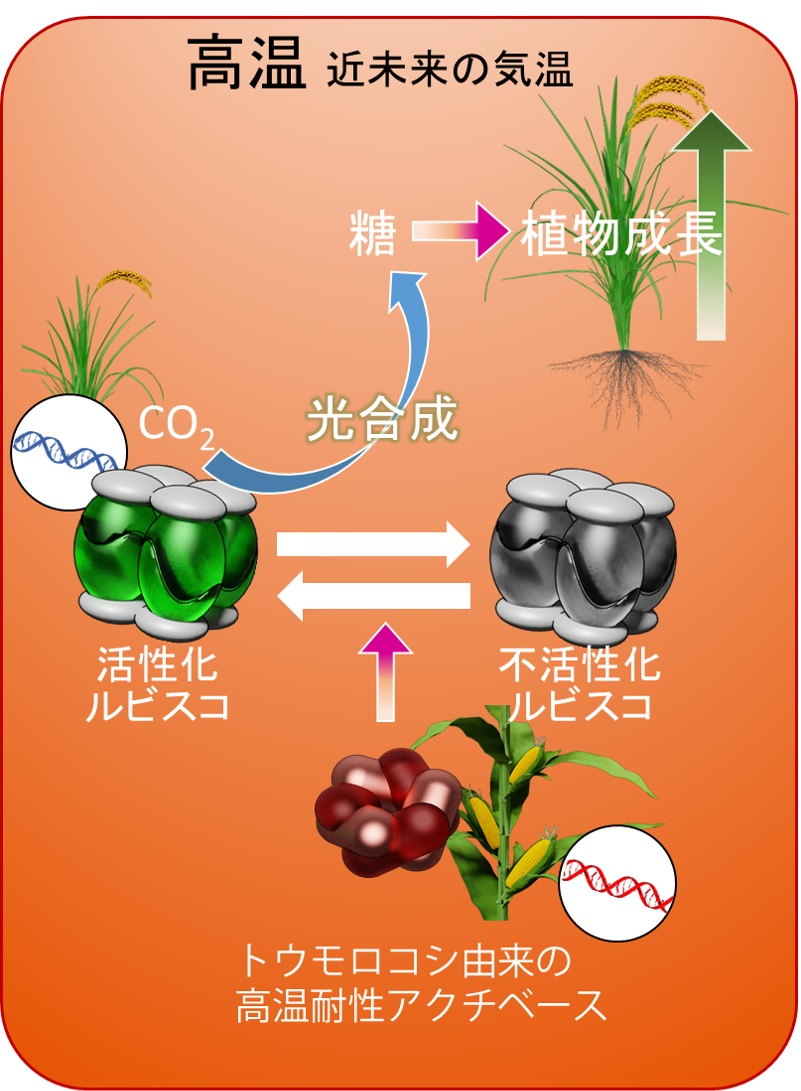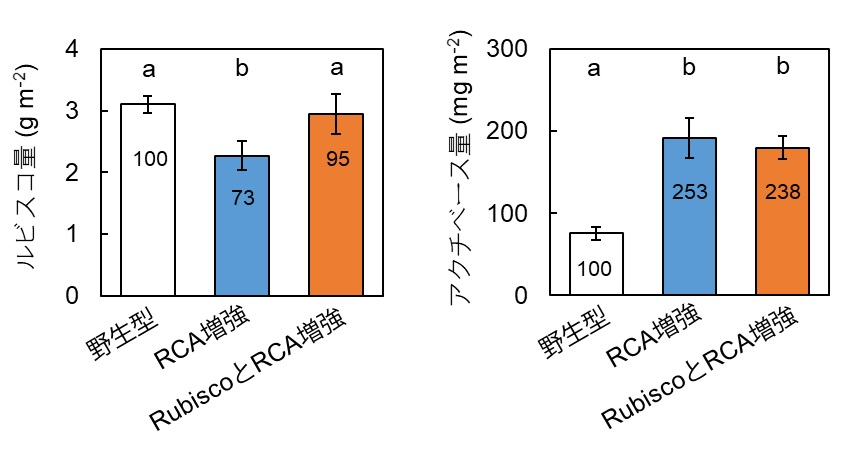

东京大学:水稻生产适应全球变暖:生产率提高了25%
公告日期:2021年4月28日
东京大学:农业与生命科学研究生院
生产了适应全球变暖的高产大米。
大米生产率提高25%
我们成功地提高了水稻在高温环境下的光合功能,并将水稻的生产率提高了25%。
日本经济新闻
https://www.nikkei.com/article/DGXLRSP609367_W1A420C2000000/
东京大学成功生产了适应全球变暖的高产大米
公告要点
光合作用是决定植物生产力的最重要的新陈代谢。
但是,它具有易受高温应力影响的缺点。
由于对高温的光合作用机制复杂,目前的情况是预期全球变暖的耐高温作物的开发被推迟了。
主要研究
光合CO2固定酶Rubisco(注1),
Rubisco Cuchibase(注释2),一种促进Rubisco活化的酶
我们创建了具有上述两种酶增强作用的双转化水稻。
提高高温环境下的光合作用能力,
成功使植物重量增加26%。
研究结果
有望在不久的将来变暖的环境中为高产作物的种植做出贡献。
东京大学大学院农学研究科
https://www.a.u-tokyo.ac.jp/topics/topics_20210428-1.html
Overexpression of both Rubisco and Rubisco activase rescues rice photosynthesis and biomass under heat stress
Abstract
Global warming
threatens food security by decreasing crop yields through damage to photosynthetic systems, especially Rubisco activation.
We examined whether
co‐overexpression of Rubisco and Rubisco activase improves the photosynthetic and growth performance of rice under high temperatures.
We grew three rice lines
—the wild‐type (WT), a Rubisco activase–overexpressing line (oxRCA) and a Rubisco‐ and Rubisco activase–co‐overexpressing line (oxRCA‐RBCS)—
and analysed photosynthesis and biomass at 25 and 40°C.
Compared with the WT,
the Rubisco activase content
was 153% higher in oxRCA and 138% higher in oxRCA‐RBCS, and the Rubisco content was 27% lower in oxRCA and similar in oxRCA‐RBCS.The CO2 assimilation rate (A) of WT
was lower at 40°C than at 25°C, attributable to Rubisco deactivation by heat.
On the other hand, that of oxRCA and oxRCA‐RBCS was maintained at 40°C, resulting in higher A than WT.
Notably, the dry weight of oxRCA‐RBCS was 26% higher than that of WT at 40°C.
These results show that
increasing the Rubisco activase content without the reduction of Rubisco content could improve yield and sustainability in rice at high temperature.
Graduate School of Agricultural and Life Sciences, The University of Tokyo
https://www.a.u-tokyo.ac.jp/english/topics_e/topics_e_20210428-1.html